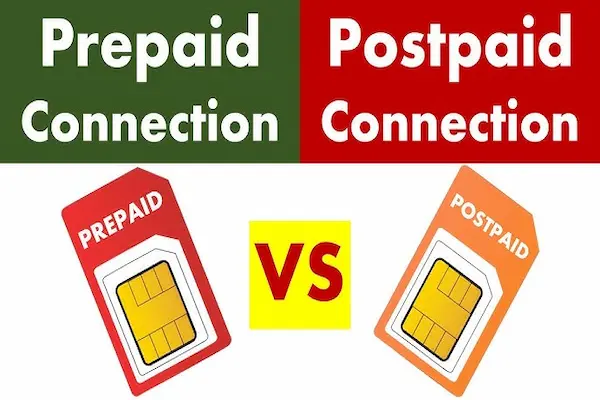Prepaid vs Postpaid: Which Phone Plan Saves You More?
Decide faster: prepaid vs postpaid breakdown covering bill predictability, device promos, throttling thresholds, hotspot data and family multi-line savings.
Advertising
Why “prepaid vs postpaid” is the phone-plan decision that actually matters
Choosing between prepaid and postpaid changes how you pay, how you are prioritized on busy towers, and how much you truly save.
It also impacts credit checks, international features, hotspot rules, device promos, and how predictable your monthly bill feels.
The right answer depends on your usage pattern, not just a headline price, and this guide gives you a lean, no-nonsense framework to decide with confidence.
This article is independent and informational, with no affiliation to carriers or device makers.

Prepaid vs postpaid at a glance (lightweight list “table”)
Use these side-by-side bullets as a mental table without heavy HTML.
How you pay
- Prepaid: Pay before service each month; service pauses if you do not renew.
- Postpaid: Pay after usage; bill arrives monthly with taxes, fees, and add-ons.
Credit and identity
- Prepaid: Typically no credit check; simpler onboarding; good for students and newcomers.
- Postpaid: Usually requires a credit check; may include deposits for limited credit history.
Priority and performance
- Prepaid: Often subject to deprioritization on congested towers; speeds can dip at busy times.
- Postpaid: Frequently includes higher network priority or a “premium data” allowance before slowdowns.
Unlimited data reality
- Prepaid: Unlimited plans commonly throttle video or cap hotspot; “unlimited” may slow after a usage threshold.
- Postpaid: “Premium data” bucket before deprioritization is common; video and hotspot usually more flexible.
Hotspot rules
- Prepaid: Hotspot often limited or add-on; speed caps are common.
- Postpaid: Larger hotspot buckets on mid/high tiers; 5G hotspot speed may be higher.
Add-ons and perks
- Prepaid: Fewer bundled perks; simpler plans; occasional international add-ons.
- Postpaid: More bundles like streaming, cloud storage, or security suites on upper tiers.
International usage
- Prepaid: Pay-per-add-on for roaming; calling to specific countries sometimes included on higher prepaid tiers.
- Postpaid: Day passes or included roaming on premium plans; broader coverage in frequent-travel tiers.
Device deals and financing
- Prepaid: Discounts are smaller and upfront; financing options limited.
- Postpaid: Big trade-in credits, device financing, and bill credits across two to three years.
Family plans and multi-line pricing
- Prepaid: Multi-line discounts exist; simple math and easy add/remove lines.
- Postpaid: Deeper multi-line discounts; shared perks; robust parental tools on many accounts.
Taxes, fees, and bill predictability
- Prepaid: All-in advertised price is common; bill shock is rare.
- Postpaid: Taxes and fees often added; credits and promotions can change the first months’ totals.
When prepaid saves you more — and feels better day-to-day
Choose prepaid if you want price certainty and minimal strings attached.
- You hate bill surprises: Prepaid’s upfront pay cycle makes costs transparent and finite.
- Your usage is moderate: If you rarely hit massive data totals, occasional deprioritization is a non-issue.
- You do not need premium hotspot: Basic tethering or none at all still leaves you covered for emergencies.
- You prefer no credit check: Ideal for students, new residents, and anyone rebuilding credit.
- You switch phones frequently: BYOD on prepaid is friction-light and avoids long financing agreements.
- You manage a small group: Two to three lines on prepaid often undercut entry-level postpaid bundles.
When postpaid saves you more — despite a higher sticker price
Postpaid wins when premium performance and bundled value matter to you.
- You live in a congested area: Higher priority or “premium data” means usable speeds at rush hour.
- You need large hotspot buckets: Remote work, travel, or gaming on laptops calls for generous tethering.
- You travel internationally: Day passes or included roaming simplify cross-border trips.
- You want device promotions: Big trade-in credits can make overall ownership cheaper over the term.
- You run a bigger household: Four or more lines plus wearables and tablets benefit from deeper bundle discounts.
- You rely on bundled perks: Cloud storage, security suites, and streaming bundles can replace separate subscriptions.
Unlimited data, throttling, and the fine print you must read
“Unlimited” does not mean “unlimited at full speed.”
- Premium data vs deprioritized data: On many postpaid plans, a premium allotment flows at top priority until you cross a threshold; after that, your traffic may slow on busy towers.
- Video optimization: Some plans cap video to 480p or 720p by default; look for a toggle if HD is important.
- Hotspot allotments: Even “unlimited” plans usually limit hotspot by gigabytes and sometimes by speed tiers.
- Network management windows: Congestion rules kick in at stadiums, downtown cores, and evening peaks.
- Fair use on prepaid unlimited: A soft cap can trigger slower general data for the rest of the cycle.
Hotspot, tethering, and the reality of mobile work
Hotspot is the hidden variable that turns a cheap plan into an expensive mistake if you choose poorly.
- Know your weekly tethering need: Count the hours you use a laptop on the road; multiply by average Mbps to size your bucket.
- Prepaid limits: Expect smaller buckets or speed caps; good for email and docs, not always for 4K meetings.
- Postpaid headroom: Mid and high tiers grant larger buckets and sometimes faster 5G hotspot on supported devices.
- Thermal throttling: Any phone can slow down when hot; use a stand, shade, or short sessions for sustained performance.
- Travel backup plan: Keep a spare low-cost eSIM plan ready for conference days or hotel Wi-Fi failures.
Credit check, deposits, and financial hygiene
Your plan choice touches your finances beyond the monthly line item.
- Prepaid avoids checks: Great for privacy and simplicity; you pay what you see.
- Postpaid checks and deposits: Applicants with thin credit files may face deposits; promos can offset over time.
- Financing discipline: If you finance a phone, treat it like a loan; protect it, and keep payoff timelines visible.
- Promotion life cycles: Bill credits can take 24–36 months; early plan changes may claw back promos.
Four real-life profiles and the better default for each
Match your situation to a starting recommendation, then fine-tune.
- College student on a budget: Prepaid with a modest data cap; add hotspot only during exam season.
- Remote worker with daily hotspot: Postpaid mid/high tier for larger hotspot and priority during work hours.
- Family of four with two teens: Postpaid family plan for parental tools and multi-line discounts; lock video quality to manage data.
- Light user with a secondary phone: Prepaid pay-as-you-go or low data bucket; pause months you do not need.
Coverage and performance sanity check before you commit
A plan is only as good as the signal where you live, work, and travel.
- Test at your kitchen table, commuting route, workplace, and favorite weekend spots.
- Measure at different times of day to catch congestion patterns.
- If you rely on hotspot, run a 15-minute laptop session to confirm stability.
- Check Wi-Fi Calling and 5G support on your exact device model.
BYOD, eSIM, and switching without headaches
Modern phones make plan changes fast when you prepare.
- Confirm your device is unlocked and supports the carrier’s LTE/5G bands.
- Use eSIM to trial a prepaid line alongside postpaid before committing.
- Label lines clearly if you test two plans in parallel; set default data to the one under evaluation.
- Port your number only after you are confident the destination meets your needs.
How carriers structure “unlimited” — the patterns behind the marketing
You can decode any plan with four questions.
- Priority allowance: How many gigabytes are “premium” before deprioritization.
- Hotspot bucket: How many gigabytes at full speed; what happens after the cap.
- Video policy: Default resolution and any toggles for HD or 4K.
- International: Roaming or day passes, and whether they apply to every line.
When prepaid vs postpaid costs flip mid-year
Annual math beats month-to-month guesswork.
- Sum twelve months of line cost plus device costs and expected add-ons.
- Account for travel months that need roaming or large hotspot buckets.
- Include lost value if you forgo a major trade-in promo by staying prepaid.
- Include opportunity savings if you avoid a long commitment by staying prepaid.
Hidden gotchas that make “cheap” plans expensive
Avoid these traps to keep your savings real.
- Activation and upgrade fees: Small charges add up across multiple lines.
- Autopay requirements: Discounts may vanish if you change payment methods.
- Video throttling you did not notice: Meetings look soft if video caps force low resolution.
- Hotspot add-ons every month: A plan with a bigger included bucket may be cheaper overall.
- Promo expiring mid-contract: Calendar reminders prevent surprise bill jumps.
Decision framework: five questions to pick your winner in minutes
Answer honestly and the plan type usually chooses itself.
- Do I need consistent high speed at rush hour. If yes, lean postpaid with a premium data cushion.
- How many laptop hotspot hours per week. If more than two to three hours, postpaid mid/high tier pays off.
- Am I comfortable with credit checks and long promos. If not, prepaid keeps life simple.
- Do I upgrade phones via trade-ins. If yes, postpaid promos often lower total cost of ownership.
- What is my tolerance for surprise fees. If very low, prepaid’s all-in pricing wins.
Checklist: prepaid vs postpaid, unlimited data, throttling, hotspot, credit check
Use this to lock your choice and prevent bill shock.
- Mapped coverage and tested speed at home, work, commute, and weekend spots.
- Wrote down the plan’s priority allowance, hotspot bucket, and video policy.
- Verified device unlock status and 5G band support, including n77 where relevant.
- Decided whether I value trade-in promos more than month-to-month flexibility.
- Counted real hotspot hours per week and sized a plan accordingly.
- Checked international needs for the months I actually travel.
- Confirmed autopay, taxes, and fees so the out-the-door price is clear.
- Documented start and end dates for any bill credits or promotions.
- Set a calendar reminder one week before the promo ends to reevaluate.
- Saved a simple note with my line settings to speed up future switches.
Editorial note
This article is people-first and purely informational to help you compare prepaid vs postpaid plans safely.
We do not have affiliation with carriers, device makers, apps, or platforms referenced conceptually here, and features or availability can change without notice.
Validate plan policies, device eligibility, and activation steps in official sources before you change service.
Choose the plan type that matches your reality, not the ad — that is how you actually save money all year.





